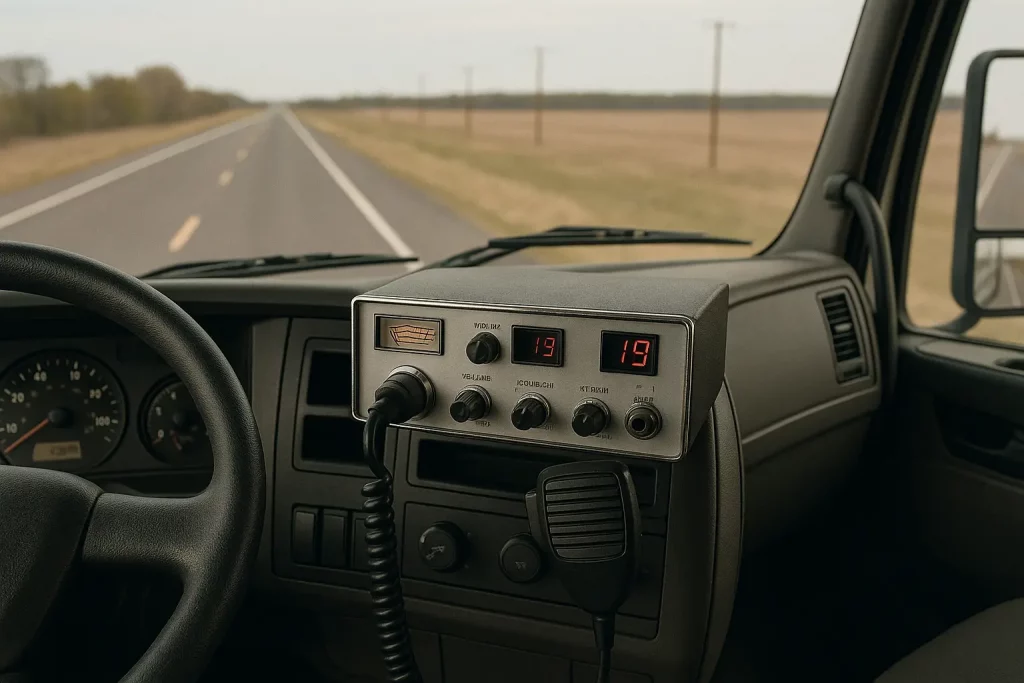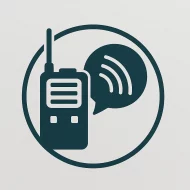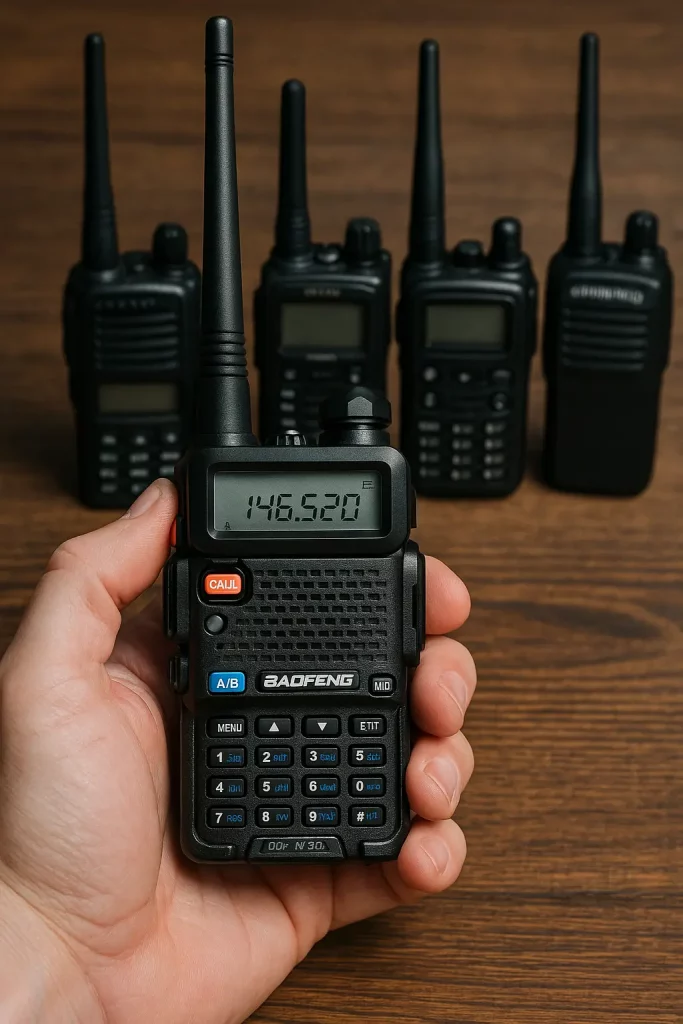
I run long miles. I spend nights at small truck stops and wide dirt lots. A CB radio sits right by my right knee. I reach for it more than my coffee. It’s not fancy. But it keeps me safe and on time.
Long stretches of asphalt can also mean long stretches without conversation beyond channel 19. For those off-duty hours when you’re parked and craving some adult interaction, you can swing over to Send Nudes for a quick, discreet way to connect with other grown-ups and trade a little late-night fun that takes the edge off the road’s loneliness.
When my dispatch runs me up toward the ferries and shipyards of Washington State, I’ve found that a more regional option helps: a quick scroll through the Bremerton listings on One Night Affair lets me spot verified locals, read fresh reviews, and set up a no-stress meet-up before I roll out again.
If you’d like another driver’s perspective on the day-to-day value of a rig’s CB, check out this personal road story that’s packed with hard-won tips and lessons.
What I’m running now
I’ve tried a few, but here’s the setup that stuck for me.
- Radio: Cobra 29 LX (big knobs, easy to see)
- Backup: Midland 75-822 handheld (rides in my go bag)
- Antenna: 4-foot Firestik with a spring on a mirror mount
- Mic: Astatic 636L (less hiss than stock)
- Speaker: Uniden external speaker by my left foot
- SWR meter: Cheap Workman thing I bought off a counter in Cheyenne
I drive a Freightliner Cascadia. I ran power from the fuse panel and grounded the mount. I tuned the antenna till SWR was about 1.3. For anyone wanting a road-tested method, this step-by-step guide to CB antenna tuning lays it out in plain English. That number is good. It means my signal gets out clean.
Moments it paid for itself
You know what? It’s not about the gadget. It’s about the heads-up.
- I-80, Wyoming, winter: Channel 19 lit up. “High profile blow-over at the 267 westbound.” I slowed down and hugged a wind break behind a cattle hauler. Ten minutes later, a dry van ahead of us went on its side. I still think about that call.
- I-40 near Amarillo: “Gator in the middle, lane two, mile 65.” I was loaded with paper. I missed that big tire chunk by inches. Saved a tire and my day.
- I-70 by the tunnel: “Rock slide at the 215, left lane blocked.” I eased right early. No hard brake, no drama.
- Memphis loop, summer storm: “Smoky pickup at the 24 east, he’s on fire.” I hit my PA, waved folks over, and tossed my extinguisher. No hero talk here—just quick help because I knew before I saw it.
- Scale house check: “Westbound scale open at the 134.” I slid to a slower lane and had my paperwork set. That small calm matters.
I also use it for dock calls. “Hey shipping, I’m at door 9, you want the tandems back?” Simple. Quick. It beats pressing a buzzer that no one hears.
How it sounds out there
Channel 19 is the road channel. That’s where we talk. Some days it’s busy. Some days it’s quiet. A normal call sounds like this:
“Eastbound, you got a bear at the 122, sitting in the middle.”
“Copy that, thanks driver.”
And yes, sometimes folks get rude or loud. I turn the squelch up and keep rolling.
What I like
- Big knobs I can grab with gloves
- ANL/NB button cuts a lot of hiss
- Weather alert saved me from hail near OKC
- Backlit screen is easy on my eyes at night
- Strong audio with that Astatic mic
Honestly, it just works. It’s old tech that still helps.
What bugs me
- LED lights in the cab can add nasty static
- Stock mic on most radios sounds thin
- With a short antenna, range is only 3–5 miles
- Channel 19 can get wild near cities
- The display on the 29 can be bright, even dimmed
None of that kills it. But it’s real stuff I deal with.
Little tweaks that helped
- Squelch: I turn it up till the noise stops, then back it down one hair
- RF gain: I keep it a bit low in town to cut junk, wide open on the open road
- Antenna: Spring mount plus a good ground strap made my signal clean
- Height: A 4-foot stick beat the stubby antenna by a mile—well, a few miles
- Speaker: An external speaker near my knee makes calls clear over road noise
If you’ve never tuned SWR, don’t sweat it. It’s like tuning a guitar. Click to channel 20. Key the mic. Adjust the antenna tip a little. Watch the meter drop. Done. If you prefer step-by-step visuals, this detailed tutorial on how to tune a CB radio walks you through each twist and tweak.
And if the meter still won’t settle, the pros at AirTronics can bench-tune your radio and antenna so your signal slices through the static.
Real range, not wish talk
With my setup, I can chat 3–7 miles most days. Flat land gives me more. Hills cut it down. Weather plays a part too. Skip sometimes rolls in, and you’ll hear folks from far away on channel 6 and 11. That can be fun, but for work I stay on 19.
Handheld as a backup
The Midland 75-822 lives in my door pocket. It’s not strong, but it’s handy. I use it at a jammed truck stop to ask, “You backing into 42?” It runs on the truck’s power with a little cord and uses a magnet antenna when I need more range. Saved me one rough night in Birmingham when my main radio fuse popped.
Money talk
My whole setup ran me around two hundred bucks.
- Radio: about $120 on sale
- Antenna and mount: about $60
- Meter and cable: about $25
I’ve had loads pay out smoother because I didn’t miss turns or sit in a wreck I could’ve dodged. That’s worth the cash.
Who needs it
- Long-haul drivers: yes, no question
- Regional folks: still helpful for scale calls and wrecks
- City day cabs: less range, but good for dock talk and construction zones
- New drivers: it’s like rolling with a hundred road guides
If you’re a team, set the mic where both of you can reach it. If you’re night shift, dim the display and keep the volume low but clear.
Tiny gripes I learned to forgive
I don’t love the big box under the dash. Wires look messy if you rush the install. And sometimes the chatter wears on me. But I remember the blow-over in Wyoming. I remember the tire chunk on I-40. That’s the deal. It helps when it counts.
Final take
Is a CB radio perfect? No. Does it pay its keep? Oh yes.
It’s a simple tool that keeps me in the loop with the folks who see the road first—other drivers. I can’t say that about many gadgets. If you’re hauling miles, get a solid radio, tune the antenna, and learn your squelch. Then let the road talk to you.

